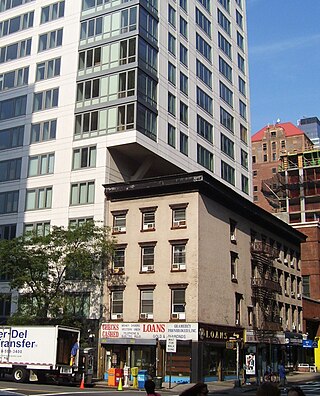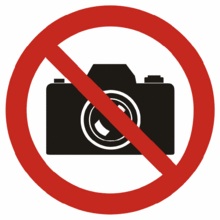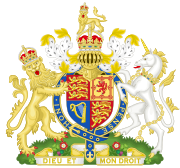Trespass is an area of tort law broadly divided into three groups: trespass to the person, trespass to chattels, and trespass to land.
Personality rights, sometimes referred to as the right of publicity, are rights for an individual to control the commercial use of their identity, such as name, image, likeness, or other unequivocal identifiers. They are generally considered as property rights, rather than personal rights, and so the validity of personality rights of publicity may survive the death of the individual to varying degrees, depending on the jurisdiction.

Aerial photography is the taking of photographs from an aircraft or other airborne platforms. When taking motion pictures, it is also known as aerial videography.
Replevin or claim and delivery is a legal remedy which enables a person to recover personal property taken wrongfully or unlawfully, and to obtain compensation for resulting losses.

Cuius est solum, eius est usque ad coelum et ad inferos is a principle of property law, stating that property holders have rights not only to the plot of land itself, but also the air above and the ground below. The principle is often referred to in its abbreviated form as the ad coelum doctrine.
Trover is a form of lawsuit in common law jurisdictions for recovery of damages for wrongful taking of personal property. Trover belongs to a series of remedies for such wrongful taking, its distinctive feature being recovery only for the value of whatever was taken, not for the recovery of the property itself.

Rylands v Fletcher (1868) LR 3 HL 330 is a leading decision by the House of Lords which established a new area of English tort law. It established the rule that one's non-natural use of their land, which leads to another's land being damaged as a result of dangerous things emanating from the land, is strictly liable.
An intentional tort is a category of torts that describes a civil wrong resulting from an intentional act on the part of the tortfeasor. The term negligence, on the other hand, pertains to a tort that simply results from the failure of the tortfeasor to take sufficient care in fulfilling a duty owed, while strict liability torts refers to situations where a party is liable for injuries no matter what precautions were taken.

Trespass to land is a common law tort or crime that is committed when an individual or the object of an individual intentionally enters the land of another without a lawful excuse. Trespass to land is actionable per se. Thus, the party whose land is entered upon may sue even if no actual harm is done. In some jurisdictions, this rule may also apply to entry upon public land having restricted access. A court may order payment of damages or an injunction to remedy the tort.
In tort common law, the defense of necessity gives the state or an individual a privilege to take or use the property of another. A defendant typically invokes the defense of necessity only against the intentional torts of trespass to chattels, trespass to land, or conversion. The Latin phrase from common law is necessitas inducit privilegium quod jura privata. A court will grant this privilege to a trespasser when the risk of harm to an individual or society is apparently and reasonably greater than the harm to the property. Unlike the privilege of self-defense, those who are harmed by individuals invoking the necessity privilege are usually free from any wrongdoing. Generally, an individual invoking this privilege is obligated to pay any actual damages caused in the use of the property but not punitive or nominal damages.

In real estate, air rights are the property interest in the "space" above the Earth's surface. Generally speaking, owning or renting land or a building includes the right to use and build in the space above the land without interference by others.

The intellectual property rights on photographs are protected in different jurisdictions by the laws governing copyright and moral rights. In some cases photography may be restricted by civil or criminal law. Publishing certain photographs can be restricted by privacy or other laws. Photography can be generally restricted in the interests of public morality and the protection of children.
Occupiers' liability is a field of tort law, codified in statute, which concerns the duty of care owed by those who occupy real property, through ownership or lease, to people who visit or trespass. It deals with liability that may arise from accidents caused by the defective or dangerous condition of the premises. In English law, occupiers' liability towards visitors is regulated in the Occupiers' Liability Act 1957. In addition, occupiers' liability to trespassers is provided under the Occupiers' Liability Act 1984. Although the law largely codified the earlier common law, the difference between a "visitor" and a "trespasser", and the definition of an "occupier" continue to rely on cases for their meaning.
The following outline is provided as an overview of and introduction to tort law in common law jurisdictions:

The Occupiers' Liability Act 1984 is an Act of the Parliament of the United Kingdom that covers occupiers' liability for trespassers. In British Railways Board v Herrington 1972 AC 877, the House of Lords had decided that occupiers owed a duty to trespassers, but the exact application of the decision was unclear. The matter was then referred to the Law Commission for a report, and as a result the Occupiers' Liability Bill was introduced to Parliament by Lord Hailsham on 23 June 1983. The Act was given the royal assent on 13 March 1984 as the Occupiers' Liability Act 1984 and came into force on 13 May.
Conversion is an intentional tort consisting of "taking with the intent of exercising over the chattel an ownership inconsistent with the real owner's right of possession". In England and Wales, it is a tort of strict liability. Its equivalents in criminal law include larceny or theft and criminal conversion. In those jurisdictions that recognise it, criminal conversion is a lesser crime than theft/larceny.

Thomas Haslem v. William A. Lockwood, Connecticut, (1871) is an important United States case in property, tort, conversion, trover and nuisance law.
Flying freehold is an English legal term to describe a freehold which overhangs or underlies another freehold. Common cases include a room situated above a shared passageway in a semi-detached house, or a balcony which extends over a neighbouring property.
Trespass in English law is an area of tort law broadly divided into three groups: trespass to the person, trespass to goods, and trespass to land.

Weir-Rodgers v SF Trust Ltd [2005] IESC 2 is a reported decision of the Irish Supreme Court that confirmed that under Section 4 of the Occupiers Liability Act 1995 an occupier of land is not required to take all reasonable care to safeguard the person or property of either trespassers or recreational users.









